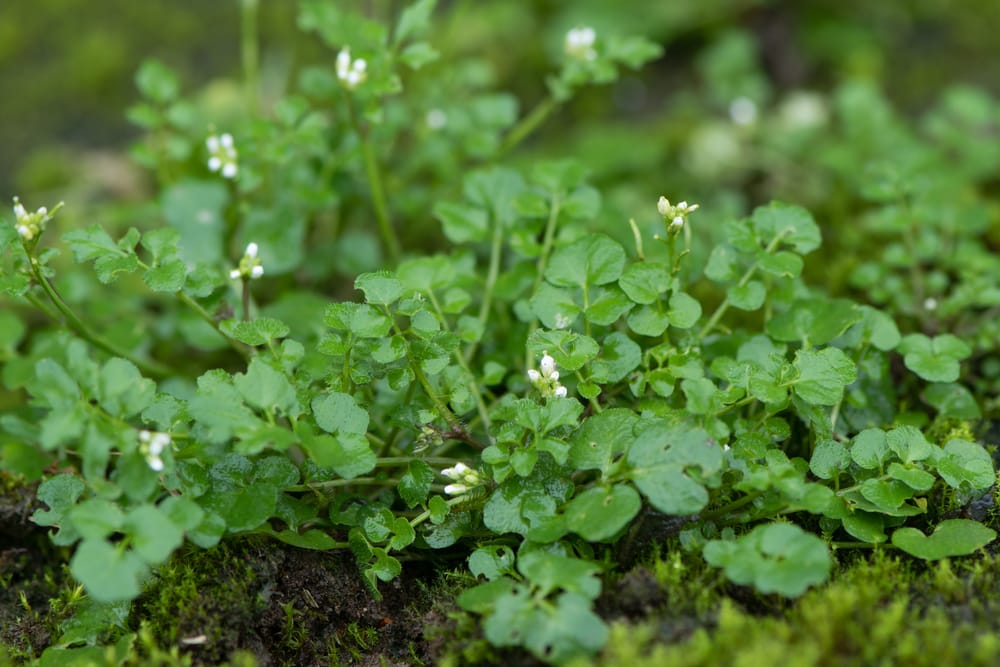
Do you want to learn about the different types of Weeds in New Jersey?
Finding an Identification Guide to Weeds in New Jersey was not as easy as I thought. There are lots of weeds in New Jersey and some of the guides were too broad, others were irrelevant, and some didn’t provide enough information.
That’s why I created a list of the New Jersey Weeds Identification Guide.
This ultimate guide will not only give you weeds in New Jersey but also important and interesting facts about them.

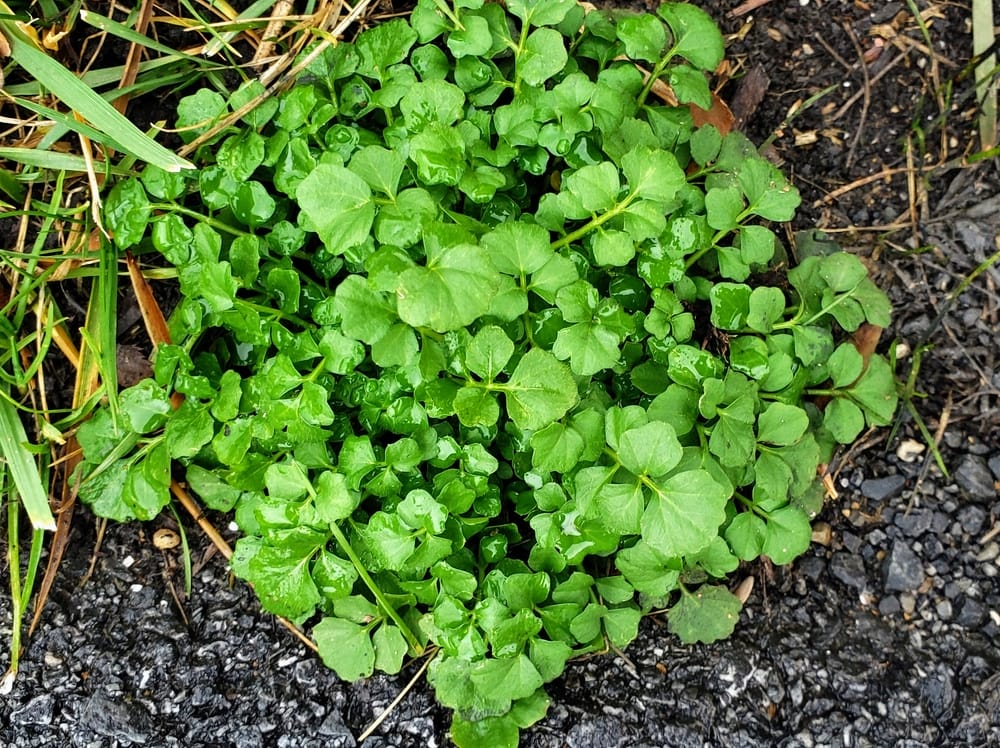
Bittercress weed can be found in shady and wet areas of your lawn. The weed is popular in New Jersey and grows faster than even lawn grass.
You do not want to have this weed on your lawn since it is invasive. The weed can disperse its seeds as far as 16 feet away and this has made it become one of the biggest problems when it comes to taking care of the lawn. Once it spreads, it’s hard to stop.
Believe it or not, but you can eat Bittercress Weed. The hairy and wavy bittercress weeds are edible. It is also important to note that the flavor is bitter and mild and therefore useful as a garnish in most salads.
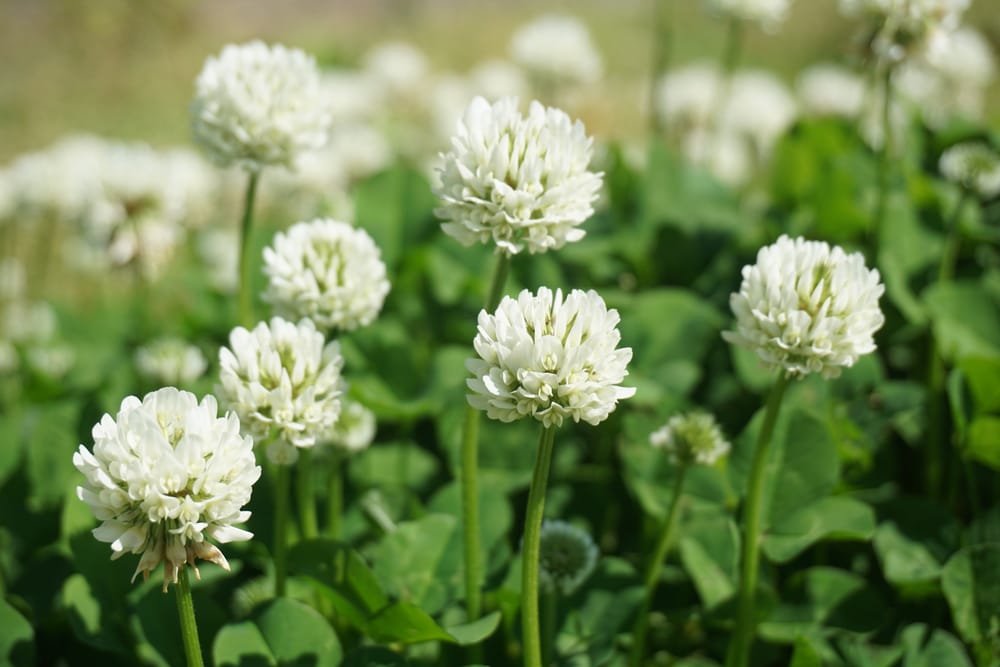
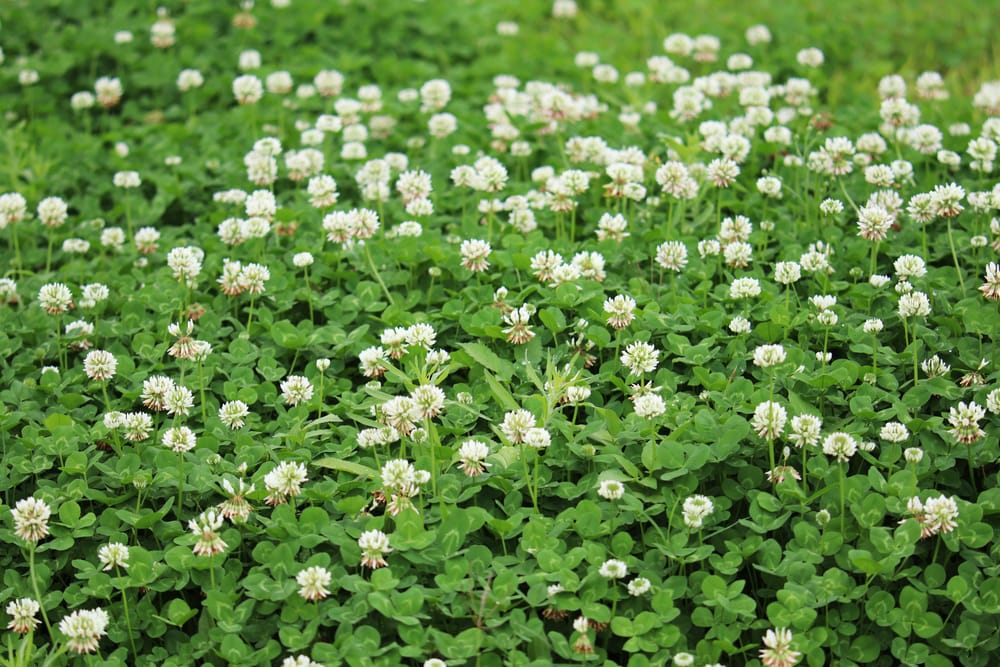
White Clovers are vigorous weeds that grow rapidly in lawns, gardens, meadows, and grasslands. These weeds are common in New Jersey and you will spot them in areas that have moist soil.
Being a perennial weed means it can live for many years. You will see the blooms from the beginning of spring all through to early fall. Once this weed begins to spread it can quickly take over your entire yard.
While this weed can be a nuisance, it also has great benefits for gardens and pollinators. It is known to fix nitrogen in the soil and hence improve soil fertility. In addition to that, it is a great source of nectar for the bees and some other pollinators.
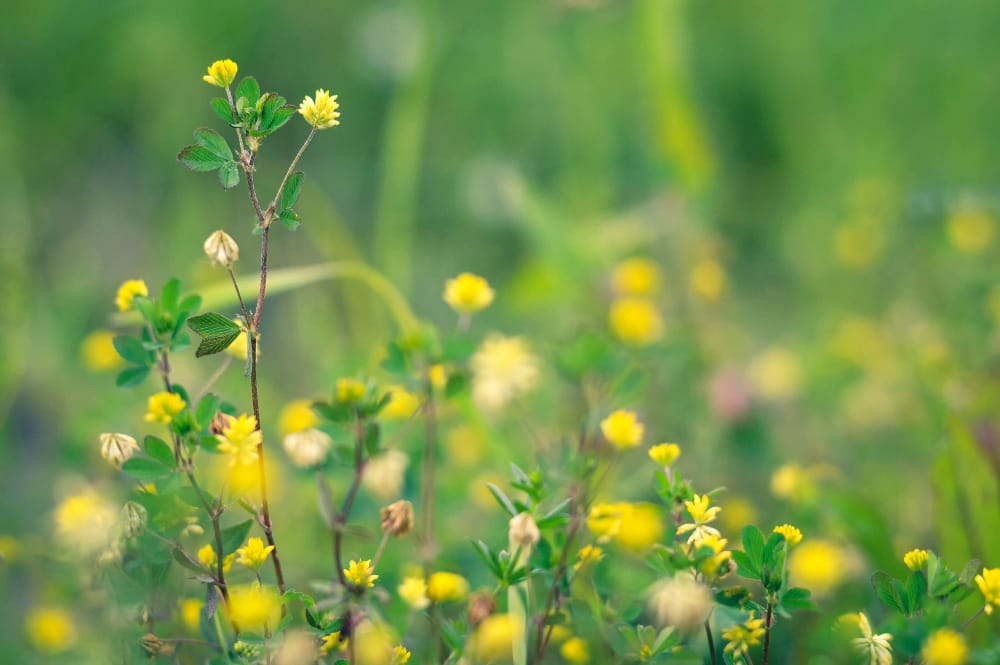
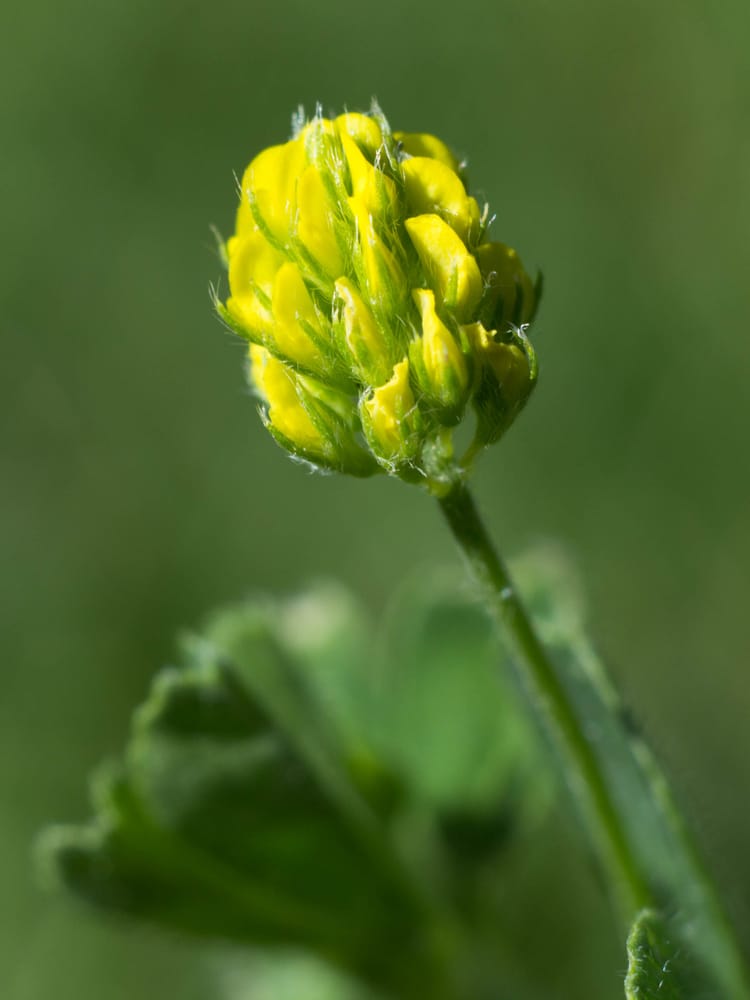
Black Medic is a common lawn weed in New Jersey. It grows in a wide range of soils including the loam soil, sandy, and clay soils. Apart from the lawns, you will also find this weed in grasslands, along the roadsides, and in the gardens.
One thing you need to know about this Medicago lupulina is that it grows rapidly and spreads faster. Therefore, it is an invasive weed that you need to control. One of the ways of controlling includes regular mowing, the use of herbicides, and hand pulling.
In addition to that, the black medic produces hard small seeds that will remain viable in the soil for very many years and should be pulled or destroyed immediately.
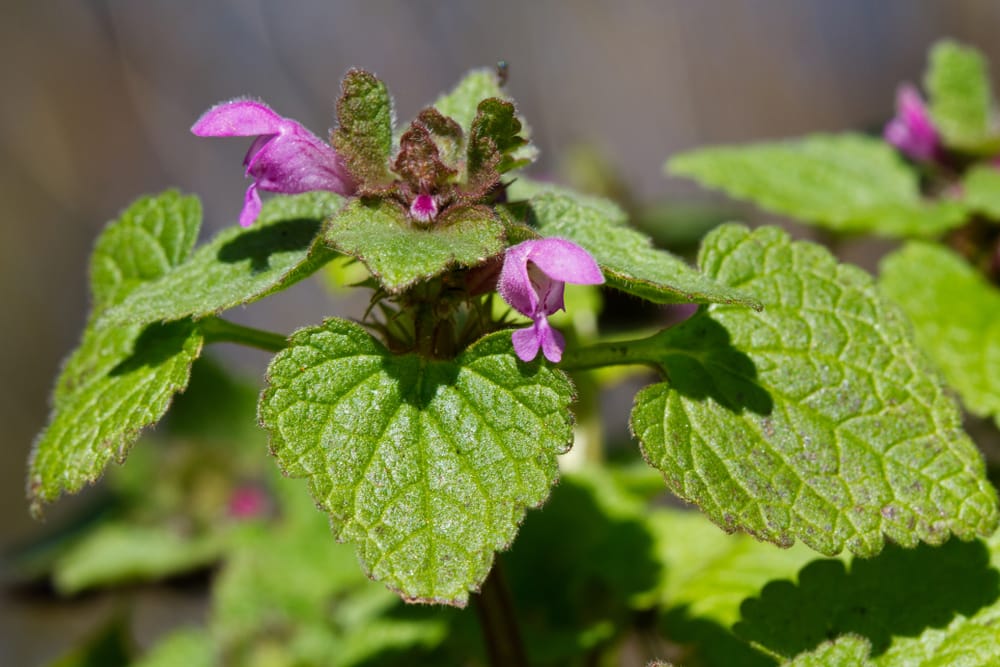
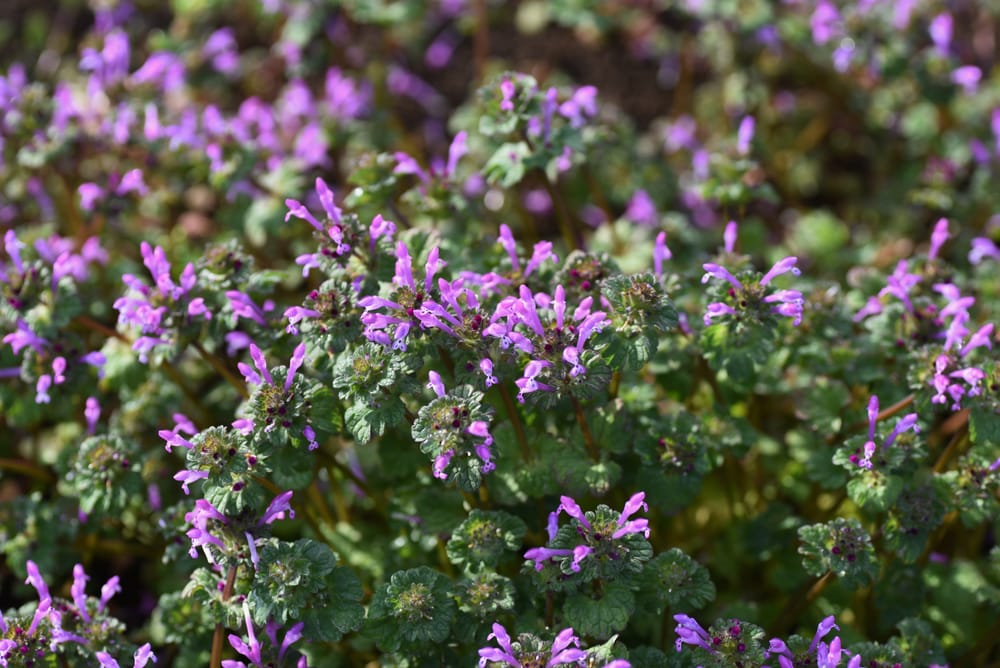
Henbit weed grows in a wide variety of habitats. You will see them in the lawns, gardens, waste places, and even on the roadsides. It is one of the common lawn weeds in New Jersey and is also distributed fairly around the world.
One of the beneficial uses of this plant is that it helps in relieving chronic pain, stiffness, and soreness. Therefore, you can use it as a laxative among other uses.
It is also important to note that this weed is useful in crop fields as it helps in controlling erosion. The plant is also considered to be invasive and when it grows on lawns, it becomes difficult to manage.
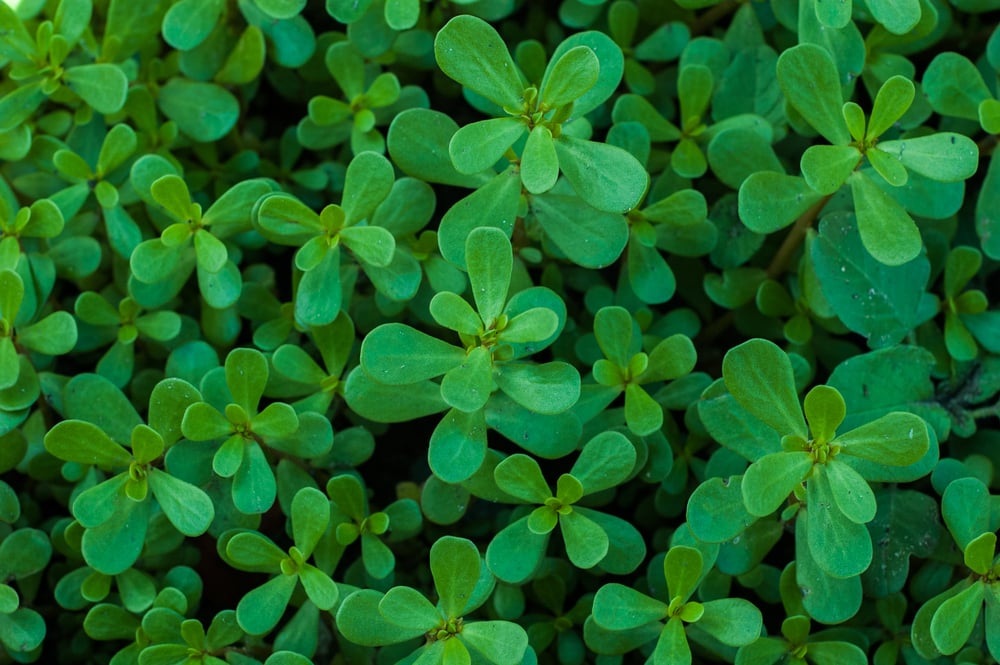
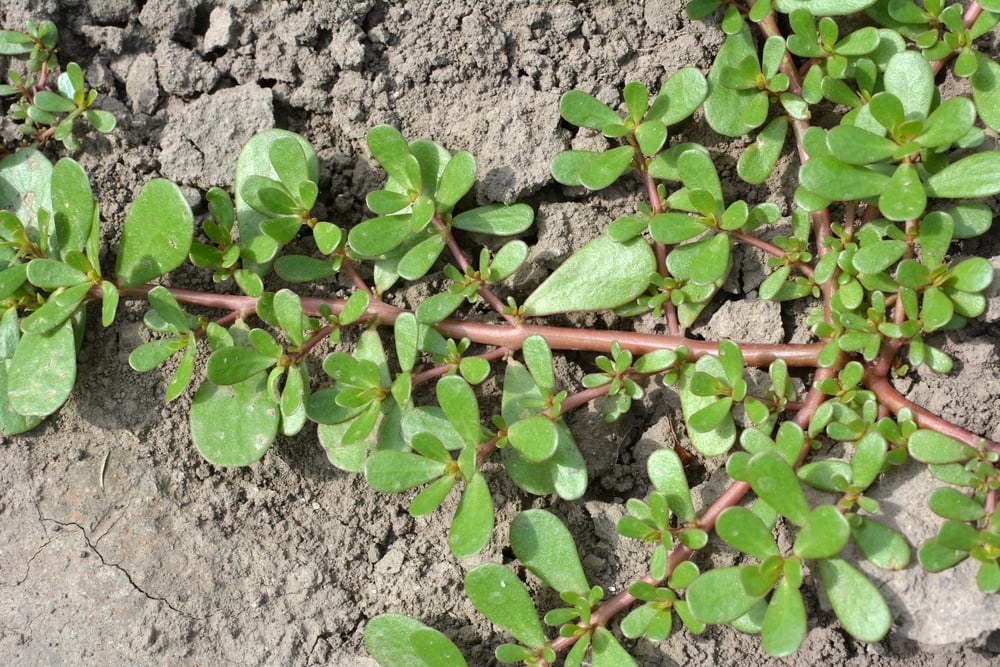
You will not miss finding these weeds in New Jersey. They are plenty in warm environments with sunny conditions. They also grow in different types of soils and hence the likelihood to find in most gardens, lawns, open fields, and sometimes even between concrete.
This weed though can be a nuisance and is edible. It is, therefore, useful in salads and soups. This is because it is a good source of nutrients such as Vitamins E, C, and magnesium. It has also been discovered to be rich in Omega 3 fatty acids.
In the absence of favorable growing conditions, the seeds can remain viable in the soil for several years. The reason why purslane is considered to be a weed is because it can outcompete other plants or crops.
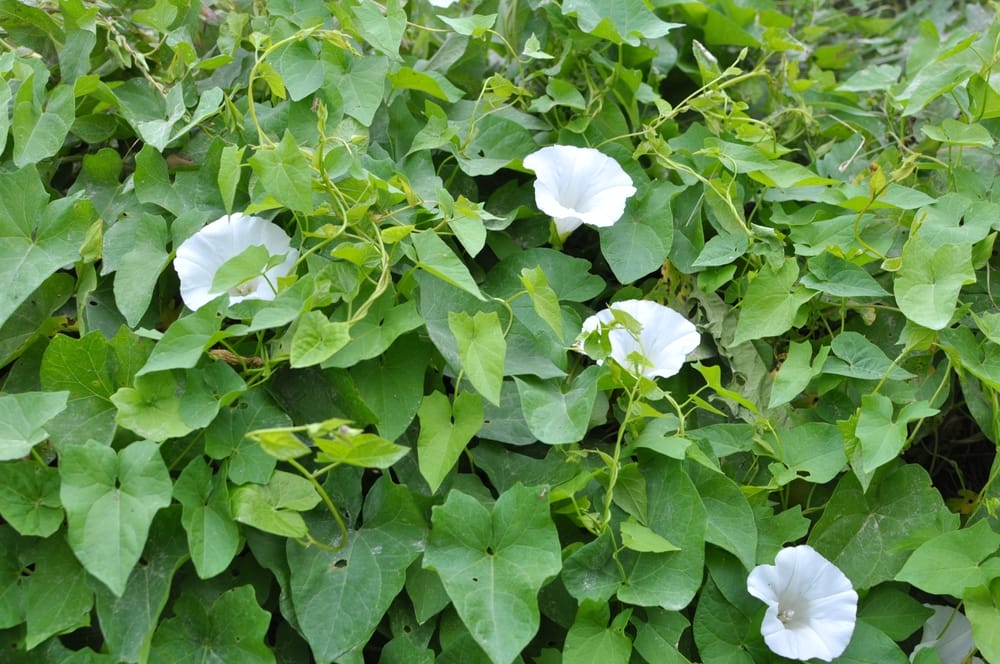
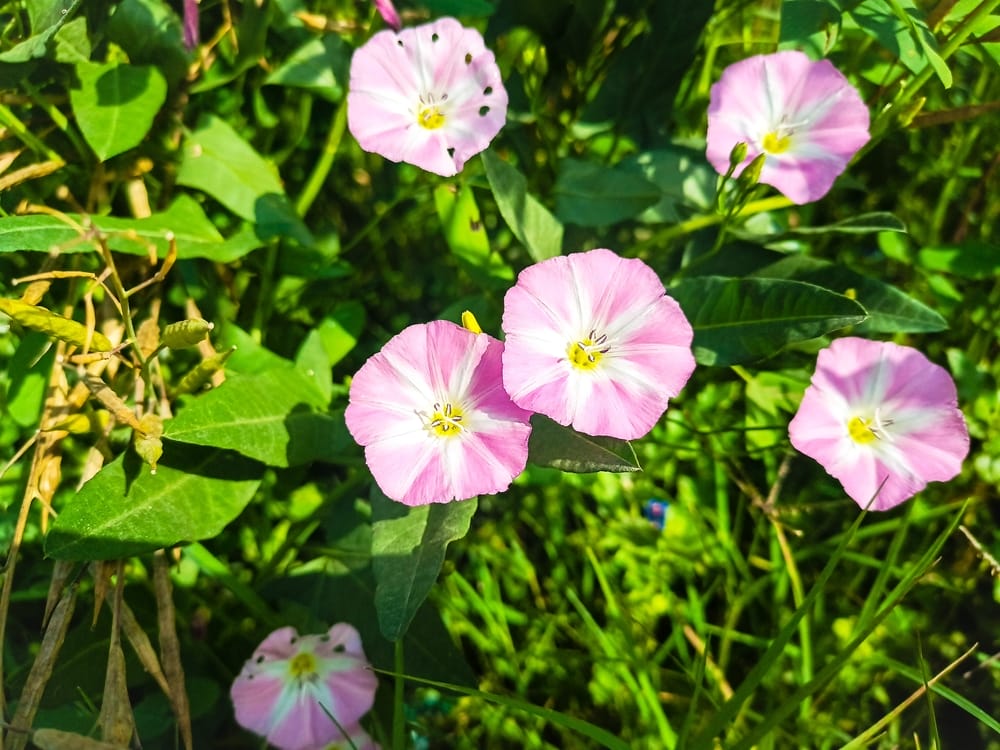
Bindweed is one of the most difficult weeds to deal with. You will find these weeds in lawns, gardens, and fields among other habitats.
When it comes to reproduction, these lawn weeds reproduce by seed and also through their spreading root system. The fact that the roots can go as deep as 30 feet and up to 10 feet horizontally means it is difficult to control.
The weed grows forming dense mats on the ground. This outcompetes native crops and vegetation and hence can lead to reduced crop yields.
As I mentioned, it is difficult to deal with this kind of weed. However, you can try some methods such as the use of herbicides, cutting the plant repeatedly, or hand pulling whenever you see them.

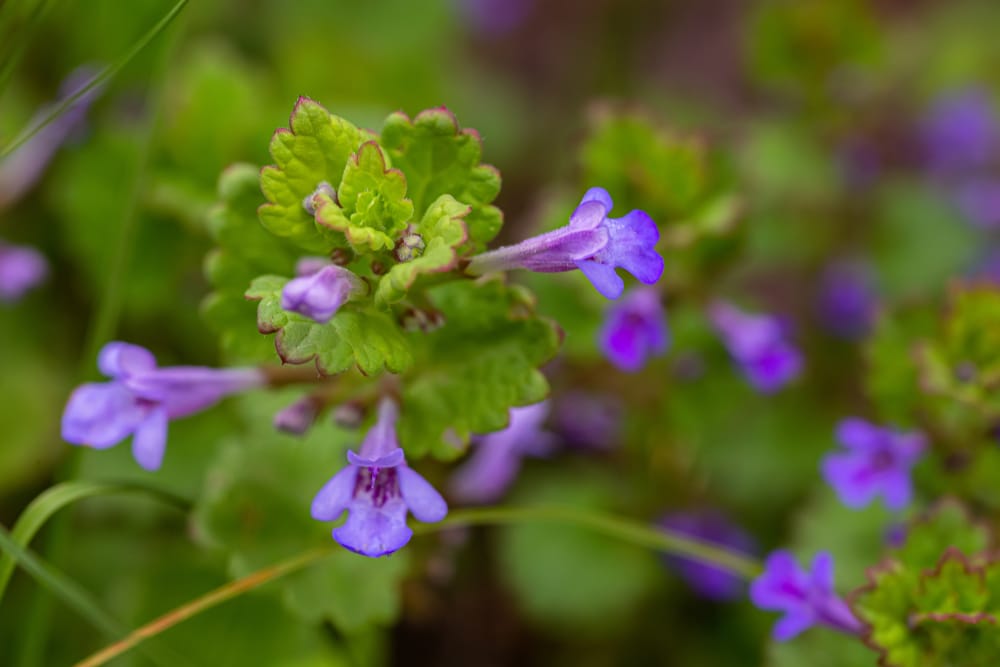
Another weed that you cannot miss on New Jersey lawns is the Creeping Charlie. This weed is known to be invasive and grows in moist and shady environments.
If left untouched, this weed can easily take over the lawns or gardens. One thing you should also note about creeping Charlie is that it is difficult to control. This is because it can tolerate herbicides and hence the need for combined approaches.
One benefit of this weed is its edible nature. You can use it as a garnish or in salads. The weed also has some medicinal properties making it useful in treating or managing colds and coughs.


Dandelions are common weeds you will find in New Jersey, especially in the lawns. The weeds can grow in different habitats and different soil types. However, they do well where there are moist and fertile soils.
The fact that dandelions are invasive means a lot when it comes to control. They can easily outcompete other crops or vegetation. Therefore, you should always take control by hand pulling, using herbicides, and regular mowing.
Since they are flowering, it means they are also beneficial to the ecosystem. They are a good source of nectar and pollen for bees and other insects. They also be used in numerous recipes as a sweetener.
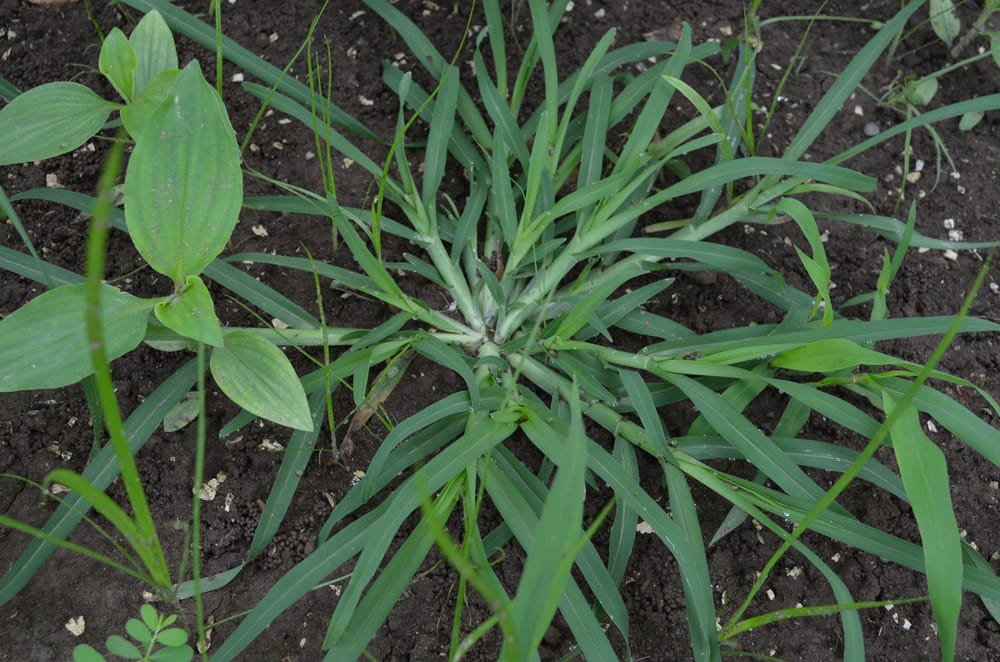

Crabgrass is a common weed that you can find in New Jersey lawns. It is also known as the hairy finger grass among other names. One fact about this weed is its presence worldwide and hence a common weed across the world.
Being an annual plant means it grows and dies in one season. The seeds then germinate in late spring or early summer – just when the temperatures are about 55 – 60 degrees Fahrenheit.
Its tolerant nature makes it a great problem in gardens and in lawns. It is difficult to control since it can tolerate dry conditions and even poor soil conditions. Also, it can resist herbicides making it difficult to keep the lawns healthy and well-maintained.
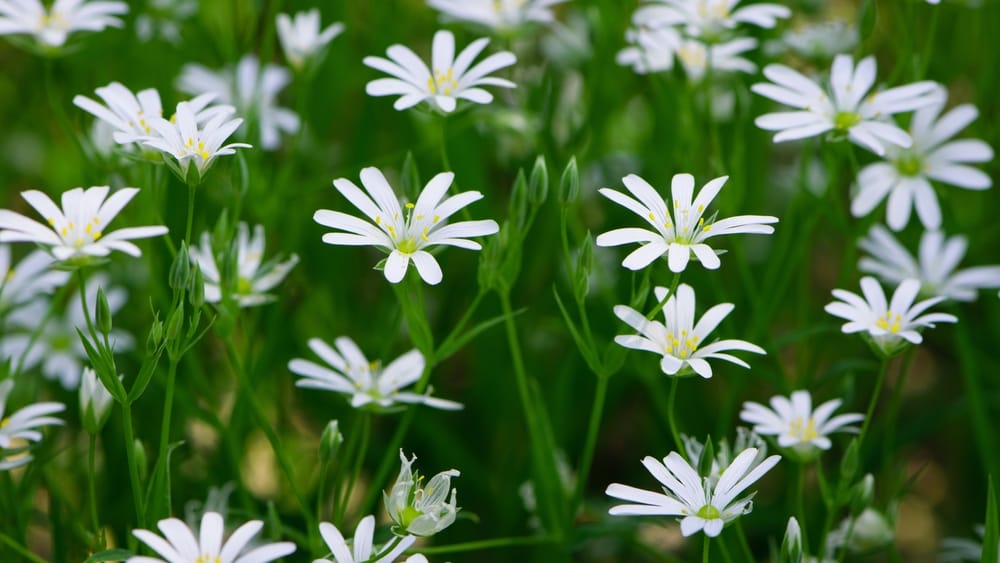

Chickweed is a common weed in New Jersey but is also found in many parts of the world. You will see them in the lawns, gardens, and in the fields among other habitats.
As mentioned, chickweed is hardy but prefers moist, shady, environments or full sun. It is also worth understanding that the plant can produce thousands of seeds that can remain viable in the soil for several years.
There is also a beneficial aspect of this weed. It flowers and that means bees and other insect that eat nectar benefits from it. Of course, it is also edible and has a slightly sweet and nutty flavor hence used in salads, stews, and soups.
I'm Paul. I'm a dad, and I love gardening. Voila! I'm The Gardening Dad! It's my goal to educate on how to grow, garden, and feed families in a simple, easy, and cost-friendly way. Enjoy digging around all The Gardening Dad articles. If you're having trouble finding what you need, please be in touch.